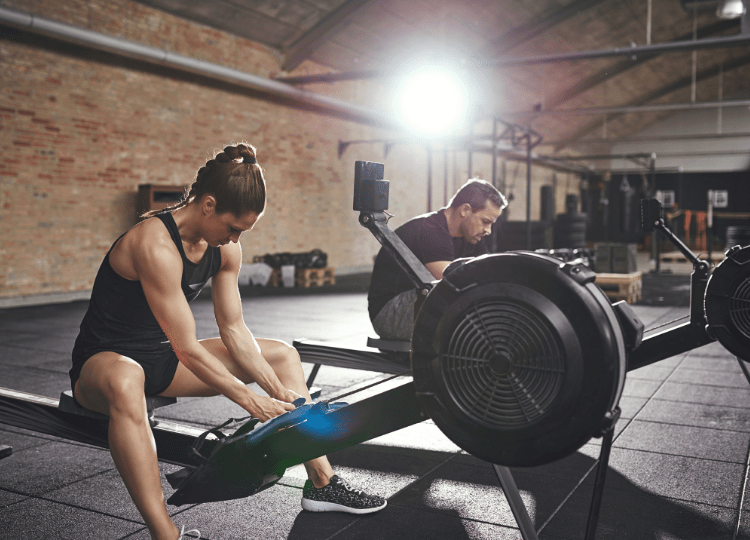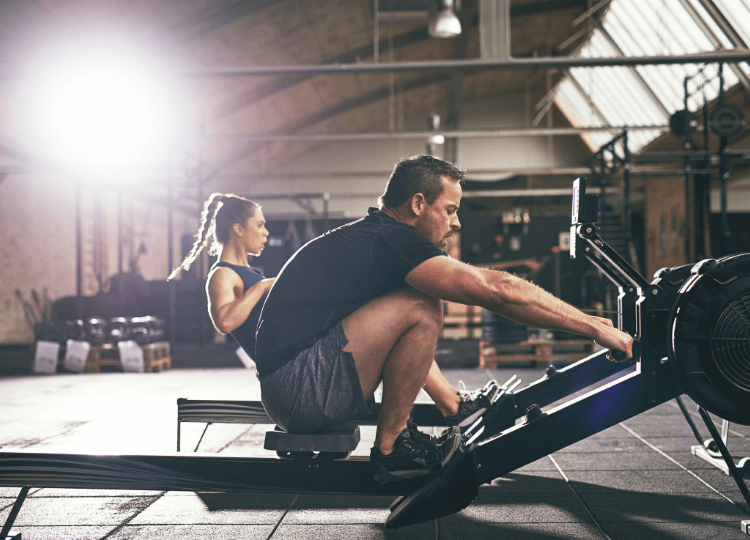Rowing and weightlifting are two fantastic forms of exercise. They both build muscle, burn fat and improve your overall health and wellbeing.
In fact, the health benefits of rowing and strength training are seriously impressive. From quite literally reducing your risk of countless diseases and improving your life expectancy, to supporting better mental health, exercises like rowing and resistance training are unquestionably worth doing.
But… and somewhat surprisingly there is a but…can both forms co-exist in the same workout?
This question may seem slightly unusual, as you’d expect all exercise to be worth doing, but with a little science lesson, you may want to rethink your workout routine.
The question of how to combine rowing and weightlifting effectively brings up an interesting concept in fitness, that your beloved influencers or generic workout apps may not be factoring in. It’s all about concurrent training, the interference effect and how our body actually builds muscle and strength.
But if this is already sounding a bit confusing, don’t worry, we’re here to help you get to grips with all this and provide practical advice to help you enjoy both rowing (or any cardio activity) and weight lifting to maximise your efforts.

Understanding Concurrent Training and the Interference Effect
Combining strength training with endurance training in the same session is referred to as concurrent training. Lots of people exercise in this way, including many professional athletes.
But new research suggests that doing resistance training and endurance training in the same session, compared to just resistance training, has diminishing returns from a strength and power perspective.
(CrossFitters, you may want to look away).
This basically means your strength and power goals could very well be negatively impacted by that endurance training you are doing during the same workout.
There are a few factors at play here. Firstly, the cardio (in this instance, the rowing), may cause increased muscle fatigue and reduce the strength in your muscles for heavier lifts. It would be harder to hit a personal best on a compound movement if you’ve just rowed for an hour and a half… your muscles are simply too tired.

Another factor is that strength training helps to build fast twitch fibres, whereas endurance activities build slow twitch fibres. This means the endurance is conflicting the type of muscle growth and potentially impacting the ability to develop fast twitch strength needed for powerlifts and weightlifting.
Endurance activities may also limit protein synthesis which is the muscle building block in your body. In contrast, resistance training alone will create more protein synthesis.
Interestingly, weight lifting doesn’t seem to interfere with endurance adaptations of muscles, so your cardio activities wouldn’t be negatively impacted by adding in resistance training.
Best Way to Combine Rowing with your Weightlifting or Strength Training Routine
So, what’s the solution, pick one or the other?
No… It’s certainly achievable to train both for strength and endurance (i.e. do rowing and weight lifting), you just need to think a bit more carefully about your workout structure.
As highlighted, simply jumping on a rowing machine and then picking up a barbell, may not be the most efficient way to workout, especially for those with ambitious strength goals.
So, we’ve outlined 7 tips to ensure your rowing complements your weightlifting and you see the improvements in both your strength and cardio health.
Avoid Heavy Lifting and Rowing on the Same Day
The main way to avoid the interference effect is to avoid concurrent training… i.e. doing both resistance and endurance in the same session.
To keep things simple, doing your resistance workout on a different day to your cardio workout is often recommended.
For example, you could follow a routine like:
Monday – Weightlifting
Tuesday – Rowing
Wednesday – Rest
Thursay – Weightlifting
Friday – Rowing

Use a Coach/Program
Another tip is to follow specific programs or use a personal training coach.
Services like Future Fitness offer virtual personal training sessions, and you can pick a coach that has experience with both rowing and strength training. They would be able to help create a very tailored program for your specific goals.
Similarly, interactive rowers like Hydrow and CityRow offer live classes you can follow along to. These are led by professionals who will ensure you are following a safe workout.
Listen to Your Body
It’s all about listening to your body and increasing your recovery if there are signs of overtraining.
Rowing requires strength in the first place, so if you’ve really pushed yourself in the weights room the previous day, you might need to adapt your rowing workout to accommodate this… and vice versa.
Rowing uses 86% of your main muscles during a workout, so it’s important not to underestimate the impact of this on your muscles, especially if they are recovering from heavy lifting.
Mobility and Stretching
Both rowing and weightlifting will create tightness in your muscles after a workout, so incorporating a regular stretching routine, potentially every day, would be useful and help your muscles stay supple.
You’ll find rowing and weightlifting can lead to tight hip flexors, so this is an area you may want to really focus on in your stretching.
Start Slow
Going hell for leather on day one is a bad idea. Slowly introduce either rowing or weightlifting into your routine and gently increase the intensity over time.
See how your body adapts and proceed as required.
Focus on Form
Rowing and weightlifting both require good form and technique to avoid injury. One of the common complaints concurrent training gets is that the endurance activities make it harder to really focus on good technique during compound lifts and movements.
If your muscles are too tired from rowing, don’t try and cheat your weightlifting by using poor technique and form, as this is likely to lead to injury.
Diet
If you’re training hard, and including multiple resistance and endurance workouts in a week, you need to think about your diet and ensure you’re giving your muscles the nutrients and protein they need to maintain muscle development and energy.
Bottom Line
The interference effect is perhaps more relevant for professional athletes and those competing at elite level, however, personally, I’d like to train in the most efficient way possible, so understanding the impact endurance can have on strength is worth considering.
The bottom line is that by carefully planning out your week and including enough time for rest and recovery, there is no reason why you can’t reach both your strength and endurance goals through rowing and weightlifting.
Related Articles:
